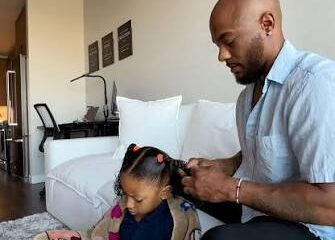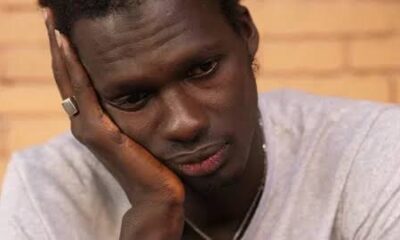Health
Causes Of Stroke And How To Prevent It

A stroke, also known as a cerebrovascular accident (CVA), is a medical condition where poor blood flow to the brain results in cell death. This can happen due to either ischemia (lack of blood flow) caused by blockage (thrombosis, arterial embolism) or hemorrhage (leakage of blood). There are two main types of strokes: ischemic and hemorrhagic. Each type has different causes, treatments, and prognoses.
Ischemic strokes account for about 87% of all strokes. They occur when a blood vessel supplying blood to the brain is obstructed. The blockage can be due to a thrombus (a blood clot formed in a blood vessel) or an embolus (a blood clot or other debris that forms away from the brain but is carried to the brain’s blood vessels). Common causes include atherosclerosis (the build-up of fats, cholesterol, and other substances in and on the artery walls), cardiac disorders (like atrial fibrillation), and small vessel disease (where the small arteries inside the brain become narrowed).
Symptoms of an ischemic stroke can vary widely depending on the affected area of the brain but often include sudden numbness or weakness in the face, arm, or leg, especially on one side of the body, confusion, trouble speaking or understanding speech, difficulty seeing in one or both eyes, trouble walking, dizziness, loss of balance, or lack of coordination. Prompt recognition of these symptoms is crucial as the saying “time is brain” underscores the need for immediate medical attention to minimize brain damage and improve outcomes.
Treatment for ischemic stroke focuses on restoring blood flow to the brain. Immediate treatment may involve administering clot-dissolving medications such as tissue plasminogen activator (tPA) within the first few hours of symptom onset. Mechanical thrombectomy, where a device is used to remove the clot from the blocked artery, is another option and is often performed if tPA is not suitable or in combination with tPA. Long-term treatment includes medications to prevent future clots, such as antiplatelet drugs (aspirin, clopidogrel) or anticoagulants (warfarin, dabigatran), and lifestyle changes like diet, exercise, and smoking cessation to address underlying risk factors.
Hemorrhagic strokes occur when a blood vessel in the brain bursts, leading to bleeding in or around the brain. They are less common than ischemic strokes but tend to be more deadly. Hemorrhages can be intracerebral (within the brain) or subarachnoid (in the space between the brain and the thin tissues covering it). Common causes include hypertension (high blood pressure), aneurysms (weakened blood vessels that bulge and can burst), arteriovenous malformations (abnormal tangles of blood vessels), and head injury.
Symptoms of hemorrhagic stroke are similar to those of ischemic stroke but may also include a sudden, severe headache, nausea, vomiting, seizures, altered consciousness, and neck stiffness (if subarachnoid hemorrhage). Rapid onset and deterioration of consciousness are more common in hemorrhagic strokes.
Treatment for hemorrhagic stroke aims to control the bleeding and reduce the pressure on the brain. This often requires surgery to repair the blood vessel, such as clipping or coiling aneurysms or removing the blood through a craniotomy. Medications may be used to control blood pressure, prevent seizures, and manage intracranial pressure. Rehabilitation focuses on helping patients recover function and independence, with a multidisciplinary team that may include physical therapists, occupational therapists, speech therapists, and psychologists.
Several risk factors increase the likelihood of having a stroke. Some are non-modifiable, such as age (risk increases with age), sex (men have a higher risk, although women tend to have worse outcomes), family history, and ethnicity (African Americans, Hispanics, and Asians have a higher risk). Modifiable risk factors include hypertension, smoking, diabetes, high cholesterol, obesity, physical inactivity, poor diet, and excessive alcohol intake. Managing these risk factors through lifestyle changes and medical treatment is key to stroke prevention.
The impact of a stroke varies widely. Some people recover fully, but more than two-thirds of survivors will have some type of disability. Stroke can affect many functions, including mobility, speech, vision, cognition, and emotional regulation. Rehabilitation is critical to recovery and often involves a combination of therapies tailored to the individual’s needs. Early and intensive rehabilitation improves the chances of recovery.
Rehabilitation may include physical therapy to improve motor functions and reduce spasticity, occupational therapy to help patients relearn daily activities and become more independent, speech therapy to address communication difficulties and swallowing issues, and psychological support to manage depression, anxiety, and other emotional changes that often follow a stroke.
Long-term management of stroke survivors involves continuous monitoring and management of risk factors to prevent recurrence. Regular medical check-ups, adherence to prescribed medications, and lifestyle modifications are essential components of care. Support groups and educational programs can provide patients and their families with necessary resources and emotional support.
Technological advancements and research continue to improve stroke care. For example, advanced imaging techniques help in quickly diagnosing stroke types and determining the best treatment options. Emerging therapies, such as neuroprotective agents and stem cell therapy, hold promise for enhancing recovery. Public health initiatives aim to increase awareness about stroke symptoms and the importance of timely medical intervention.
In conclusion, stroke is a complex and multifaceted medical condition that requires immediate attention, comprehensive treatment, and long-term management. Understanding the different types of strokes, recognizing the symptoms, and knowing the risk factors are vital steps in preventing and effectively treating strokes. Continued advancements in medical research and public health initiatives offer hope for better outcomes and improved quality of life for stroke survivors.


























